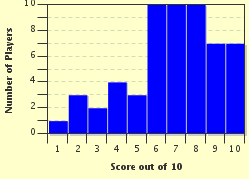Quiz Answer Key and Fun Facts
1. Which archaeologist is credited with the discovery of Çatalhöyük?
2. Çatalhöyük in Turkey is considered to be the largest and best-preserved site from which stage of cultural development in human history?
3. When looking at the site of Çatalhöyük, it immediately becomes apparent that something is missing that is usually found in the remains of a town. What was NOT found in the town?
4. What was unusual about the type of religious figurines that were first found in the ruins of Çatalhöyük?
5. Where did the residents of Çatalhöyük bury their dead?
6. The residents of Çatalhöyük had successfully begun to domesticate animals, which they used for a variety of purposes. Which of the following animals was domesticated there?
7. The ancient people of Çatalhöyük decorated the walls of their homes. Although archaeologists do not agree on the interpretation of all the art, what appears to have been used to decorate the walls?
8. Archaeologists believe that the residents of Çatalhöyük were technologically advanced for their time.
9. After studying the remains of Çatalhöyük, archaeologists have determined that the town was governed by a king.
10. Evidence found at Çatalhöyük suggests that the people there were developing industry. What was manufactured there on a large scale?
Source: Author
ponycargirl
This quiz was reviewed by FunTrivia editor
bloomsby before going online.
Any errors found in FunTrivia content are routinely corrected through our feedback system.


